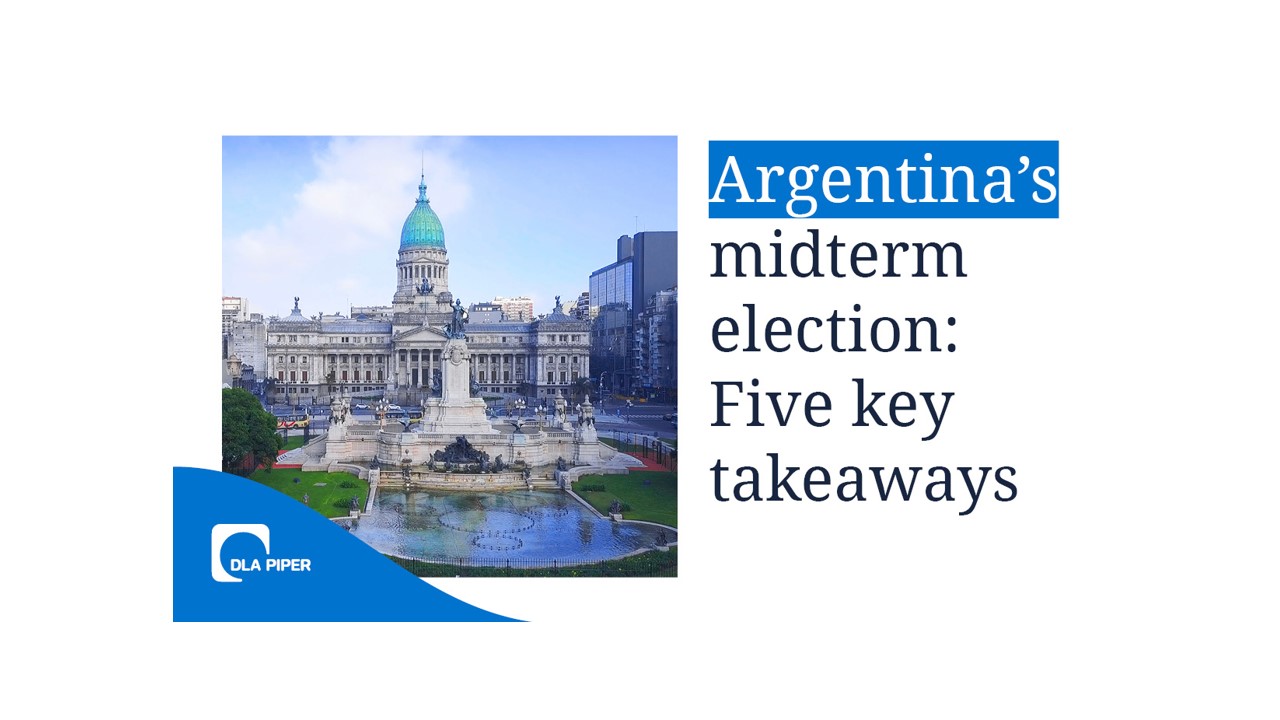The alliance between President Javier Milei’s La Libertad Avanza (LLA) and former President Mauricio Macri obtained 41 percent of the vote in Argentina’s midterm election on Sunday, October 26. Kirchnerismo/left-wing Peronism received 25 percent, plus 6 percent from affiliated parties in certain provinces under different party banners. This was an unexpected victory, even for President Milei, as acknowledged in his remarks on Sunday night.
While LLA won, Peronism performed strongly in the Province of Buenos Aires and achieved a similar overall result nationwide as in previous elections, where it either lost to Pro or performed slightly worse. Consequently, there were 43 Peronist members up for renewal in the Lower House, and Peronism secured 43 new seats, maintaining its position. However, LLA had only 8 members up for renewal and gained 51 new seats.
Most other parties had unexpectedly low results in what was a highly polarized election – particularly in the Province of Buenos Aires – where LLA and Peronism together accounted for almost 83 percent of the votes.
By December 2025, LLA will hold 80 seats in the Lower Chamber, and Pro will have 24 seats (10 of which were won under the LLA party seal). LLA and Pro will form the first minority in the Lower Chamber with 104 seats. Peronism will hold 99 seats, maintaining its current position as the second-largest bloc.
A minimum of 85 seats is required to form a blocking faction capable of sustaining presidential vetoes. A total of 129 votes is needed to pass legislation in the Lower Chamber.
In the Senate, LLA will have 18 members (adding 12 seats), while Pro will retain 6 (with no new additions), totaling 24. Peronism will have 28 senators – its lowest number in decades. A minimum of 36 votes is required to pass a bill.
Five key takeaways
- LLA’s victory is expected to significantly ease financial pressures. Notably, it prevented a “Black Monday” scenario forecasted by some economists and traders.
- The win may strengthen the government’s ability to negotiate with moderate governors and congressmen, potentially facilitating the approval of a new annual budget law (President Milei has been operating under the 2023 budget due to a lack of agreement on budgets for 2024 and 2025), as well as labor, tax, and pension reforms. This could foster a more favorable investment climate. Companies are encouraged to closely monitor the political strategy adopted by the ruling party following this victory and their willingness to build consensus around these initiatives. President Milei delivered a moderate speech aimed at appealing to centrist congressmen and governors. To discuss the pending reforms, 17 governors have already accepted to meet with President Milei on Thursday, October 30 at the Presidential Palace (Casa Rosada).
- The victory may prevent abrupt changes to the current foreign exchange system, though adjustments may be made in the near future. While the dollar at ARS1,350–1,450 is not extremely low, some economists consider it unsustainable due to the Central Bank’s inability to systematically accumulate reserves at that rate – which is a requirement under the International Monetary Fund (IMF) USD20 billion Extended Fund Facility signed in April 2025. The current level results in a negative balance of approximately USD12 billion. To comply with the current IMF Agreement, the Central Bank would need to accumulate roughly USD1.3 billion every month until the end of the mandate. Additionally, about USD4 billion has been lost from future grain export liquidations, and the United States Department of the Treasury has sold approximately USD2 billion to contain the currency run, which will eventually need to be repurchased.
- The ruling party’s victory will facilitate finalization of the USD20 billion loan from private banks and securing backing from the US Treasury – along with a currency swap of equal value – to manage dollar-denominated debt maturities for the remainder of the term. The risk of default will decrease substantially, and sovereign bond prices are likely to rise significantly, enabling Argentina to access markets again in the first quarter of 2026. President Milei has been repaying national debt in dollars using fiscal surpluses in 2024 and 2025, contributing to the current reserve deficit. By tapping the international capital markets, Argentina may begin increasing reserves in the coming years at a faster pace.
- An agreement with governors may result in new fiscal spending on infrastructure – which was close to zero since President Milei took office in December 2023. Such investment may help reverse the economy’s recessionary trend.
For more information, please contact the author.





